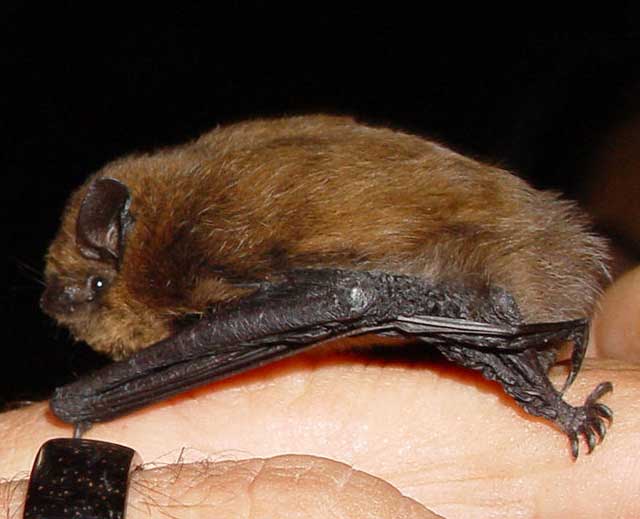Pipistrellus (Pipistrellus) pipistrellus (*) Cladus: Eukaryota Name Pipistrellus (Pipistrellus) pipistrellus Schreber, 1774 Type locality: France. Synonyms * Pipistrellus (Pipistrellus) lacteus Temminck, 1840
* Schreber, 1774. Die Saugethiere, 1: 167.
* British Isles, Denmark, & West Europe to the Volga and Caucasus
------------ The Common Pipistrelle Pipistrellus pipistrellus is a small pipistrelle bat whose very large range extends across most of Europe, North Africa, southwestern Asia, and possibly into Korea. It is one of the most common bat species in the British Isles. It is 3.5-4.5 cm long with a wingspan of 19-25 cm. Its brown fur is variable in tone. It is common in woodland and farmland but is also found in towns, where it roosts in lofts and buildings. In 1999 the Common Pipistrelle was split into two species on the basis of different-frequency echo-location calls. The Common Pipistrelle uses a call of 45 kHz, while the Soprano Pipistrelle echo-locates at 55 kHz. Since the two species were distinguished, a number of other differences, in appearance, habitat and food, have also been discovered. Echolocation The frequencies used by this bat species for echolocation lie between 45-76 kHz, have most energy at 47 kHz and have an average duration of 5.6 ms. [1][2] References * Aulagnier & Benda (2004). Pipistrellus pipistrellus. 2006. IUCN Red List of Threatened Species. IUCN 2006. www.iucnredlist.org. Retrieved on 11 May 2006. Database entry includes a brief justification of why this species is of least concern. 1. ^ Parsons, S. and Jones, G. (2000) 'Acoustic identification of twelve species of echolocating bat by discriminant function analysis and artificial neural networks.' J Exp Biol., 203: 2641-2656. Source: Wikispecies, Wikipedia: All text is available under the terms of the GNU Free Documentation License |
|

